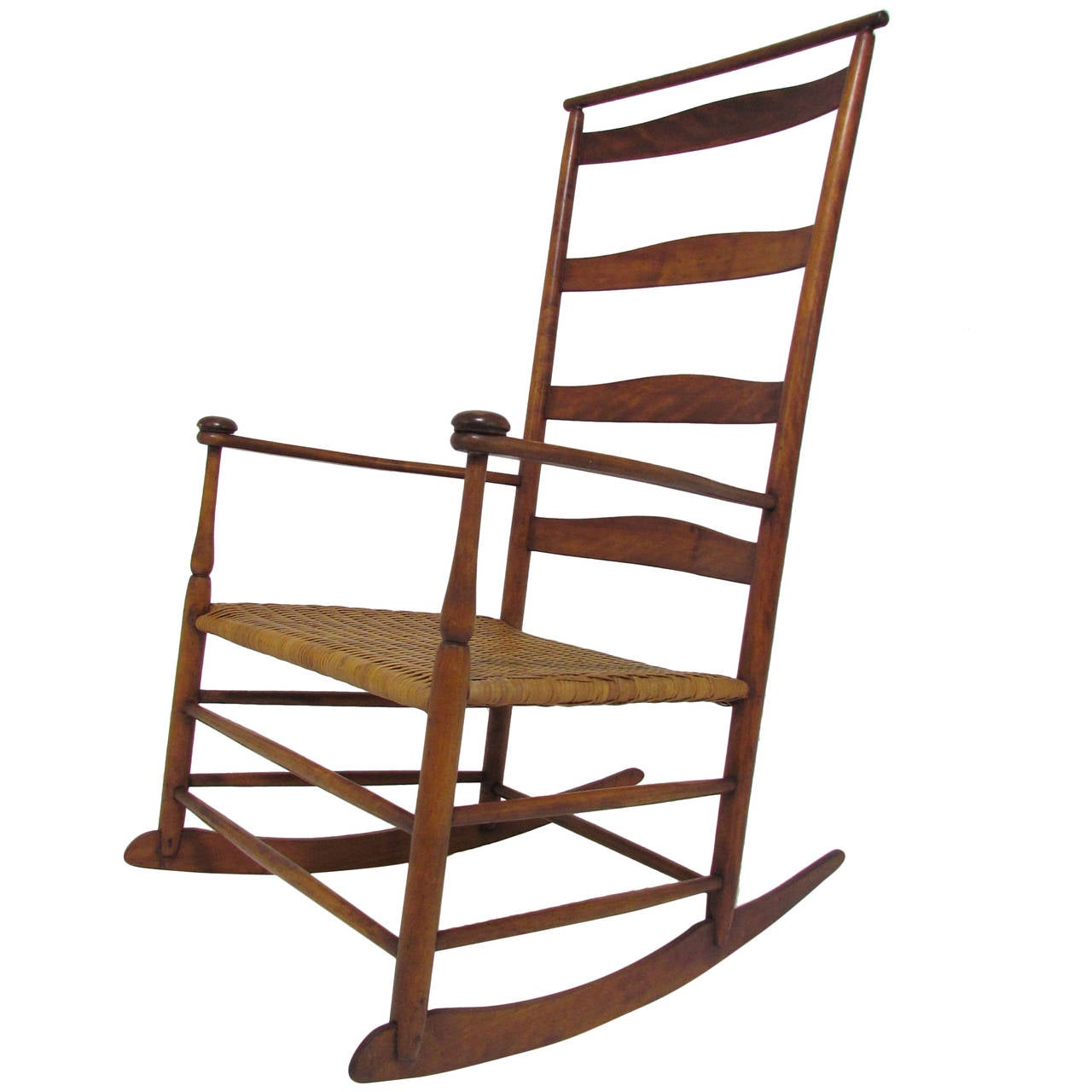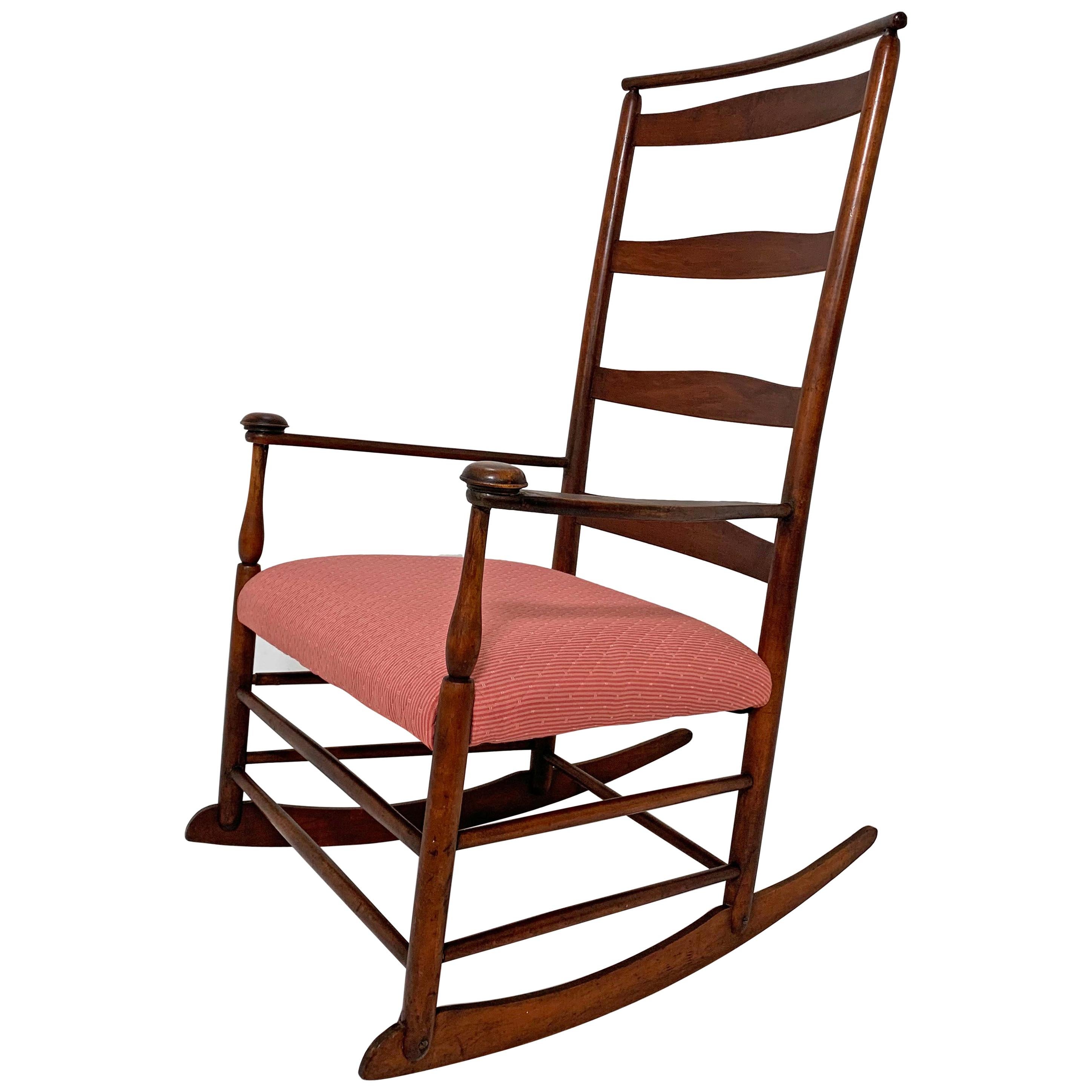The Shaker Style Rocking Chair
.jpg)
The Shaker style rocking chair, a testament to simplicity and functionality, stands as a cornerstone of American furniture design. Its origins lie within the unique and influential Shaker community, a religious sect known for their commitment to plain living and communal living.
Origins and Influence of the Shaker Style
The Shaker style, with its emphasis on practicality and craftsmanship, emerged in the 18th century, rooted in the principles of the United Society of Believers in Christ’s Second Appearing, commonly known as the Shakers. Founded in England by Ann Lee, the Shakers migrated to America in the 1770s, establishing communities throughout New England and the Midwest. Their beliefs, centered on celibacy, communal living, and a focus on simple living, profoundly influenced their approach to design.
Key Design Principles of Shaker Furniture
Shaker furniture is renowned for its minimalist aesthetic, emphasizing simplicity, functionality, and exceptional craftsmanship. The following principles guide the design:
- Simplicity: Shaker furniture avoids unnecessary ornamentation and focuses on clean lines and uncluttered forms. The emphasis is on functionality and practicality, with every element serving a purpose.
- Functionality: Every piece of Shaker furniture is designed with a specific purpose in mind, prioritizing utility and ease of use. The rocking chair, for example, was crafted for comfort and practicality, allowing for gentle rocking motion while engaging in activities like reading or conversation.
- Craftsmanship: Shakers were highly skilled artisans who meticulously crafted their furniture using traditional techniques and high-quality materials. The furniture is known for its durability and longevity, often lasting for generations.
Evolution of the Shaker Rocking Chair
The Shaker rocking chair evolved over time, reflecting both the changing needs of the community and the evolving design principles of the Shaker style. Early rocking chairs, crafted in the late 18th and early 19th centuries, were typically made of wood with simple, utilitarian designs. They featured a low, curved seat, a slightly sloping back, and rockers that provided a gentle rocking motion. As the Shaker communities grew and their needs changed, the design of the rocking chair evolved. Later versions incorporated more elaborate details, such as turned legs, spindles, and decorative elements. The rocking chair became an integral part of Shaker life, serving as a place for reflection, relaxation, and social interaction.
Historical Anecdotes and Stories
The Shaker rocking chair played a significant role in the daily lives of Shaker communities. It was a common sight in meeting houses, where members would gather for worship and communal activities. The gentle rocking motion was believed to promote tranquility and reflection, allowing individuals to connect with their inner selves. In homes, rocking chairs provided a comfortable spot for reading, sewing, or simply enjoying a moment of peace.
“The Shaker rocking chair was more than just a piece of furniture; it was a symbol of their values of simplicity, functionality, and community.”
Design Features and Characteristics of the Shaker Rocking Chair

The Shaker rocking chair, a testament to simplicity and functionality, stands as a beacon of timeless design. Its sleek silhouette, characterized by a rounded back and a wide, gently sloping seat, exudes an aura of understated elegance. The chair’s design, rooted in practicality, embodies the Shaker belief in utility and craftsmanship.
Materials and Craftsmanship
The Shaker rocking chair is typically crafted from high-quality hardwood, such as maple or cherry. These woods are known for their strength, durability, and beautiful grain patterns. The Shaker artisans, renowned for their meticulous attention to detail, employed traditional woodworking techniques to create chairs that were not only sturdy but also aesthetically pleasing. They meticulously selected each piece of wood, ensuring its soundness and beauty. They then used hand tools to shape and join the wood, creating a chair that was both functional and visually appealing.
Design Elements
The Shaker rocking chair’s design is distinct from other rocking chair styles. Its streamlined silhouette, devoid of ornamentation, stands in stark contrast to the elaborate designs of Victorian rocking chairs. The rounded back, designed to provide support and comfort, is a hallmark of the Shaker style. The wide, gently sloping seat ensures stability and provides ample room for the sitter. The chair’s rocking motion is smooth and graceful, achieved through the use of carefully crafted rockers.
Simplicity and Functionality
The Shaker rocking chair embodies the Shaker philosophy of simplicity and functionality. Its design is devoid of unnecessary embellishments, focusing solely on its primary purpose: to provide a comfortable and functional seat. The chair’s streamlined form and durable construction make it a practical choice for everyday use. The Shaker rocking chair is a testament to the belief that beauty can be found in simplicity and functionality.
The Shaker Rocking Chair in Contemporary Design: Shaker Style Rocking Chair

The Shaker rocking chair, a symbol of simplicity and functionality, continues to inspire contemporary furniture designers. Its enduring appeal lies in its timeless elegance and ergonomic design, making it a sought-after piece in modern interiors. This enduring legacy is evident in the way contemporary designers have adapted and reinterpreted the Shaker rocking chair, injecting new materials, techniques, and aesthetic sensibilities while preserving its core principles.
Contemporary Designers Inspired by the Shaker Style
The Shaker style has captivated contemporary furniture designers, who have drawn inspiration from its minimalist aesthetics and emphasis on craftsmanship. Some notable designers who have incorporated Shaker elements into their work include:
- George Nakashima: Known for his use of natural wood and organic forms, Nakashima’s work often reflects Shaker principles of simplicity and functionality. His rocking chairs, like the “Conoid Rocking Chair,” showcase a similar emphasis on the beauty of natural materials and elegant proportions.
- Peter Opsvik: A pioneer in ergonomic design, Opsvik’s work emphasizes comfort and functionality. His “Tripp Trapp” high chair, a modern classic, draws inspiration from the Shaker rocking chair’s focus on ergonomic design and practicality.
- Sam Maloof: A master woodworker, Maloof’s work is known for its organic forms and handcrafted quality. His rocking chairs, like the “Rock-a-bye Chair,” embody a similar sense of warmth and handcrafted beauty as Shaker furniture.
Adaptations and reinterpretations of the Shaker rocking chair
Contemporary designers have taken the Shaker rocking chair as a starting point for innovation, reinterpreting its form and function while retaining its core principles.
- Material experimentation: While traditional Shaker rocking chairs were crafted from wood, contemporary designers have experimented with a range of materials, including metal, plastic, and even recycled materials. This exploration of new materials allows for a wider range of aesthetics and functionality, while still maintaining the chair’s minimalist essence.
- Modernized aesthetics: Contemporary reinterpretations often feature updated silhouettes and finishes, incorporating sleek lines and bold colors. For example, some rocking chairs may feature a more angular or minimalist design, while others might incorporate vibrant upholstery or contrasting materials to create a more contemporary feel.
- Enhanced functionality: Contemporary designers have also incorporated features that enhance the rocking chair’s functionality, such as adjustable backrests, integrated storage compartments, or even built-in lighting. These additions cater to modern lifestyles and preferences, while still preserving the chair’s core ergonomic design.
Enduring appeal and relevance in contemporary interiors
The Shaker rocking chair’s enduring appeal stems from its timeless design, which seamlessly blends into various interior styles.
- Simplicity and elegance: The Shaker rocking chair’s minimalist design and emphasis on functionality make it a versatile piece that complements both modern and traditional interiors. Its clean lines and absence of unnecessary embellishments create a sense of calm and sophistication.
- Ergonomic comfort: The rocking chair’s gentle rocking motion provides a soothing and relaxing experience. Its ergonomic design, which promotes proper posture and support, makes it an ideal choice for both reading and relaxation.
- Sustainability and craftsmanship: The Shaker rocking chair’s emphasis on natural materials and handcrafted quality resonates with contemporary values of sustainability and craftsmanship. Its timeless design and durability ensure that it can be enjoyed for generations to come.
Materials and techniques in contemporary Shaker-inspired rocking chairs, Shaker style rocking chair
Contemporary designers have embraced a wide range of materials and techniques to create Shaker-inspired rocking chairs that are both aesthetically pleasing and functionally innovative.
- Sustainable wood: Many designers continue to use sustainable wood species, such as maple, cherry, and walnut, to craft their rocking chairs. These woods are known for their durability, strength, and beautiful grain patterns, echoing the Shaker tradition of using natural materials.
- Metal and plastic: Some contemporary designs incorporate metal frames or accents, adding a touch of industrial chic. Others utilize plastic for its lightweight and durable qualities, allowing for a more contemporary and playful aesthetic.
- Innovative techniques: Contemporary designers are also employing innovative techniques, such as laser cutting, 3D printing, and CNC machining, to create intricate designs and precise forms. These techniques allow for greater flexibility and customization, enabling designers to push the boundaries of traditional Shaker design.
Shaker style rocking chairs are known for their simple, elegant design and comfortable rocking motion. While the gentle back-and-forth movement may not be a strenuous workout, it’s worth considering if rocking in a chair can actually contribute to calorie burning.
A recent article on does rocking in a chair burn calories explores this question, suggesting that even a moderate rocking motion can burn a small number of calories, particularly if maintained for a sustained period. So, while your Shaker style rocking chair may not be a substitute for a rigorous workout, it might offer a subtle, enjoyable way to incorporate a bit of movement into your day.
The Shaker style rocking chair, with its simple elegance and graceful curves, is a classic for a reason. However, for outdoor use, a more robust design is often desired. Outdoor rocking chairs with shocks offer the same gentle rocking motion, but with added stability and comfort, thanks to the shock-absorbing mechanism that smooths out uneven surfaces and reduces stress on joints.
While the Shaker style may be more traditional, modern outdoor rocking chairs offer a unique blend of comfort and durability.
